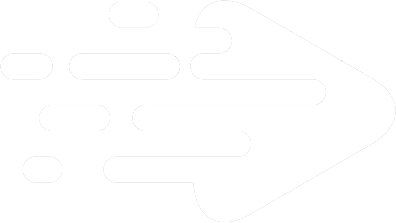When applying for jobs, your resume is your first impression—and often, the only chance you have to grab a hiring manager’s attention. Most resumes follow the same outdated, single-column format that buries key information under walls of text. But there’s a better way to structure your resume: the two-column resume.
A two-column resume is a visually engaging, easy-to-scan format that helps hiring managers quickly see your most valuable qualifications. It’s a small change that can increase your chances of landing interviews—especially in competitive fields like marketing, tech, design, and remote work.
In this article, we’ll break down why a two-column resume works, how to format it effectively, and how you can use it to stand out in the hiring process.
Why a Two-Column Resume Works
✅ It’s Easier to Read
Recruiters spend an average of six to seven seconds scanning a resume before deciding whether to read further. A two-column format organizes key details upfront, making it easier for them to spot your skills, experience, and accomplishments instantly.
✅ It Highlights Key Information
Traditional resumes often bury important details in long paragraphs. A two-column resume separates essential elements—like skills, achievements, and links to work samples—into a sidebar while keeping work experience in a wider main column.
✅ It Looks More Professional & Modern
A visually appealing resume helps you stand out, especially in creative and tech industries. A well-structured two-column layout gives your resume a polished, sleek look that signals attention to detail and professionalism.
✅ It Maximizes Space
With a traditional one-column resume, candidates often struggle to fit everything onto one page. A two-column layout reduces wasted space and lets you include more relevant information without overwhelming the reader.
How to Structure a Two-Column Resume
A two-column resume splits content into two sections:
- Left Column (Narrow Sidebar) → Quick, scannable details
- Right Column (Main Content) → Work experience, education, and accomplishments
Here’s how to format it effectively:
🟢 Left Column (Sidebar) – Quick Highlights
This narrow section should feature high-impact details that recruiters can scan within seconds:
✅ Name & Contact Information
- Your full name
- Email, phone number, and LinkedIn profile
- Optional: Personal website or portfolio link
✅ Professional Summary (Optional)
A short, compelling 2-3 sentence summary of your expertise and what you bring to the table.
✅ Skills & Competencies
List 5-10 key skills relevant to the job (e.g., SEO, video editing, digital marketing, Python, UX design).
✅ Certifications & Awards
If applicable, showcase professional certifications (e.g., Google Ads, HubSpot Content Marketing) or industry awards.
✅ Links to Work Samples
For roles in marketing, content creation, design, or development, include clickable links to work samples.
🟢 Right Column (Main Content) – Experience & Achievements
This wider column is where you highlight your work experience and accomplishments in detail.
✅ Work Experience
- Company Name & Job Title
- Dates Worked
- Bullet Points (3-5 per job) focused on results and achievements, not just job duties
- Use metrics to show impact (e.g., “Increased website traffic by 40% in 3 months”).
✅ Education
- Degree, Major
- University Name
- Graduation Year
✅ Projects (Optional, but Recommended)
If you’ve worked on freelance, personal, or side projects, include a section highlighting relevant projects with links to work samples.
Example Two-Column Resume Layout
🟢 Left Column (Sidebar)
📌 Contact Info
📌 Skills
📌 Certifications
📌 Work Samples
🔵 Right Column (Main Content)
📌 Work Experience
📌 Education
📌 Projects
How to Create a Two-Column Resume
Option 1: Use Online Resume Builders
To simplify the process, use free or paid resume builders that offer two-column templates. Here are some great options:
- VisualCV – User-friendly, sleek templates
- Canva – Customizable design options
- Zety – Professional resume builder with optimized layouts
- Novoresume – Clean, ATS-friendly templates
Option 2: Use Microsoft Word or Google Docs
If you prefer manual formatting, use tables or columns in Word or Docs:
- Go to Insert > Table
- Select 1 row, 2 columns
- Adjust the left column to be narrower than the right
- Fill in content accordingly
Option 3: Use a Design Tool (For Creative Fields)
For graphic designers, marketers, or creatives, Adobe InDesign or Figma can help create a fully customized, visually stunning resume.
Mistakes to Avoid with a Two-Column Resume
🚫 Too Many Sections in the Sidebar – Keep it clean and only include key details.
🚫 Using a Non-ATS-Friendly Format – Avoid fancy fonts, excessive graphics, or unusual file types (use PDF or .docx for ATS compatibility).
🚫 Neglecting Readability – Ensure that text is legible with a clean font (Arial, Calibri, or Open Sans work best).
🚫 Focusing on Duties Instead of Impact – Employers care about results—not just job descriptions. Use numbers, achievements, and measurable outcomes.
Who Should Use a Two-Column Resume?
✅ Marketing professionals – Helps highlight campaign results, social media engagement, and branding work.
✅ Creative fields (Design, Video Production, Content Creation) – Great for showcasing portfolio links and projects.
✅ Tech professionals (Developers, Engineers, UX Designers) – Allows space for skills, certifications, and GitHub links.
✅ Remote job seekers – Makes it easy for hiring managers to quickly scan remote-relevant skills.
✅ Anyone who wants to stand out – If you’re applying in a highly competitive field, a two-column resume can grab attention faster.
Final Thoughts: Make Your Resume Work for You
A two-column resume isn’t just about looks—it’s about strategic readability and impact. By organizing information in a way that recruiters and hiring managers can digest quickly, you’ll increase your chances of landing interviews.
Ready to revamp your resume? Try the two-column format today and see the difference it makes in your job search!
Are you tired of the endless and frustrating job search process? Look no further than FasterGig – the smarter, automated method that will help you get remote video jobs 10 times faster with minimum effort.
With FasterGig, you can find new job opportunities in your area or even remote positions without the need for previous experience. Our website offers a quick and easy way to apply to jobs and find gigs that fit your skills and needs.
Say goodbye to the stress and time-consuming job search process and hello to a new job with FasterGig!
Click here to get started on your journey towards a brighter and more fulfilling career in the video production industry.

